Germany
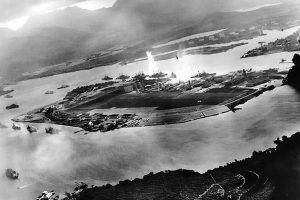
 There are some national events that stay in our thoughts and hearts forever. The Pearl Harbor is one of those events. The attack on Pearl Harbor was so destructive and so unexpected that it shocked everyone…well, most everyone anyway. President Franklin D Roosevelt knew that Japan would likely attack, but thought it would be in the western Pacific Ocean, especially the Philippians. Pearl Harbor was considered an unlikely target. Roosevelt wanted to enter the war, but he wanted to attack Germany, whom he considered to be the bigger threat. In fact, he had ordered the attack on any U-Boats found in the west side of the Atlantic. So, technically the US was already in the war…most people just didn’t know that. Still, the attack on Pearl Harbor was horrific and the United States had to retaliate.
There are some national events that stay in our thoughts and hearts forever. The Pearl Harbor is one of those events. The attack on Pearl Harbor was so destructive and so unexpected that it shocked everyone…well, most everyone anyway. President Franklin D Roosevelt knew that Japan would likely attack, but thought it would be in the western Pacific Ocean, especially the Philippians. Pearl Harbor was considered an unlikely target. Roosevelt wanted to enter the war, but he wanted to attack Germany, whom he considered to be the bigger threat. In fact, he had ordered the attack on any U-Boats found in the west side of the Atlantic. So, technically the US was already in the war…most people just didn’t know that. Still, the attack on Pearl Harbor was horrific and the United States had to retaliate.
The attack on Pearl Harbor took so many people by surprise. It was a Sunday morning, and many of the military personnel were off base attending church services. The Japanese knew that the ships, planes, and the base in general would be seriously understaffed at the time of the attack. Of course, on the flip side, the fact that so many of the military personnel were away from the base at the time of the attack, meant that the base was able to get back up and running quickly and when we did enter the war, the Japanese were surprised about the attacks coming back at them. Of course, as we all know, the Allies went on to win the war against the Axis nation, including Germany and Japan. It’s been said that people shouldn’t wake the sleeping giant, and that is a wise statement. The Japanese awakened the United States to the fact that appeasing your enemies will not prevent an attack. It takes a show of military might to inform our enemies that it is wise to back away and let the sleeping giants lie.
Of course, the victory that was won following the attack of Pearl Harbor and the US entrance into World War II, came at a high price. A total of 2,403 people (both civilians and soldiers), not to mention ships, airplanes, and 
 other military equipment. After the attack, the people of the United States were…angry!! We quickly geared up and the war was on for the United States. Our delay could never bring back the people we lost, but we would certainly avenge their loss. Today we remember those we lost, and those who went out to take up the fight to protect our country from such a horrendous attack.
other military equipment. After the attack, the people of the United States were…angry!! We quickly geared up and the war was on for the United States. Our delay could never bring back the people we lost, but we would certainly avenge their loss. Today we remember those we lost, and those who went out to take up the fight to protect our country from such a horrendous attack.
 For most of us, who took gymnastics in school or other training, our school years coming to an end, usually also ends our “gymnastics career,” if it could be called that. There are some gymnasts who continue on in their career or even go on to the Olympics, but even then, most of them are finished with their gymnastics career by their late teens or early twenties. Let’s face it, gymnastics is a strenuous career, and most people just can’t take the strain very late in life or even past their very early lives. There are a few, however, who are active into their mid to late thirties, and one, Oksana Chusovitina, who is currently still active at 48 years old. Nevertheless, Chusovitina is nowhere near the oldest active gymnast.
For most of us, who took gymnastics in school or other training, our school years coming to an end, usually also ends our “gymnastics career,” if it could be called that. There are some gymnasts who continue on in their career or even go on to the Olympics, but even then, most of them are finished with their gymnastics career by their late teens or early twenties. Let’s face it, gymnastics is a strenuous career, and most people just can’t take the strain very late in life or even past their very early lives. There are a few, however, who are active into their mid to late thirties, and one, Oksana Chusovitina, who is currently still active at 48 years old. Nevertheless, Chusovitina is nowhere near the oldest active gymnast.
Johanna Quaas, who is finally “rumored” to have retired, was born November 25, 1925. She is a German gymnast who was certified by Guinness World Records April 12, 2012, as the world’s oldest active competitive gymnast. At that time, she was 86 when she broke the record. She was a regular competitor in the amateur competition Landes-Seniorenspiele (State Senior Games) in Saxony. She became known worldwide on March 26, 2012, when YouTube user LieveDaffy uploaded two videos of Quaas performing gymnastics routines…one on the parallel bars and one on the floor. Prior to that video, the tiny, 5’2″ gymnast was relatively unknown, but as the clips went viral, within six days of posting and had generated over 1.1 million views each, that all changed. In addition to being recognized by Guinness World Records, Quaas has received the Nadia Com?neci Sportsmanship Award from the International Gymnastics Hall of Fame. Being an active gymnast at 86 is unheard of, and yet, Quaas continued to compete until she suffered a torn biceps tendon in 2018, while trying to help her granddaughter. Of the incident, “She just wanted to adjust a baby chair  for her granddaughter, but the ‘nipple just wouldn’t go through the flap’ – a jerk and jerk – a severe pain in her left arm led to the above diagnosis! That hurt, of course,” said the still active senior athlete, “but strangely enough, I can now raise my arm a lot better than before, and the doctor said, let’s leave it that way for now!” Technically, she stopped performing active or competitive gymnastics. Nevertheless, in addition to fact that she can actually raise her arm better than before, she could still stand on her head at age 95. Still unable to slow down really, she has developed a bed gymnastics routine which she performs every morning and has made the routine available on YouTube and DVD published by Wissner-Bosserhoff. So, has she completely retired? Only time will tell.
for her granddaughter, but the ‘nipple just wouldn’t go through the flap’ – a jerk and jerk – a severe pain in her left arm led to the above diagnosis! That hurt, of course,” said the still active senior athlete, “but strangely enough, I can now raise my arm a lot better than before, and the doctor said, let’s leave it that way for now!” Technically, she stopped performing active or competitive gymnastics. Nevertheless, in addition to fact that she can actually raise her arm better than before, she could still stand on her head at age 95. Still unable to slow down really, she has developed a bed gymnastics routine which she performs every morning and has made the routine available on YouTube and DVD published by Wissner-Bosserhoff. So, has she completely retired? Only time will tell.
Johanna Geißler was born November 20, 1925, in Hohenmölsen, Germany. She was always an active child. She often climbed tall bars and roll on the mats. She began gymnastics at an early age and loved it immediately. She first competed at about age ten, but soon her family moved to a different part of Germany, temporarily ending her participation in competitions. When she was eleven, she began Nazi Germany’s required social  service work for girls during World War II during which she worked in farming and took care of the children of another family. After completing the compulsory social service, she trained as a gymnastics coach in Stuttgart, finishing in 1945 and moving to Weißenfels. She was still unable to work in gymnastics at that time, because it had been banned in East Germany during the first two years of post-World War II Allied occupation. So, she took up team handball instead, while in Weißenfels, learning and practicing it until the ban on gymnastics was removed in 1947. In 1950, she studied at the University of Halle to become a sports teacher. She has been an active athlete all her life, and it’s been a very long and healthy life. Today, Johanna Quaas is 98 years old. Happy birthday to this amazing lady.
service work for girls during World War II during which she worked in farming and took care of the children of another family. After completing the compulsory social service, she trained as a gymnastics coach in Stuttgart, finishing in 1945 and moving to Weißenfels. She was still unable to work in gymnastics at that time, because it had been banned in East Germany during the first two years of post-World War II Allied occupation. So, she took up team handball instead, while in Weißenfels, learning and practicing it until the ban on gymnastics was removed in 1947. In 1950, she studied at the University of Halle to become a sports teacher. She has been an active athlete all her life, and it’s been a very long and healthy life. Today, Johanna Quaas is 98 years old. Happy birthday to this amazing lady.
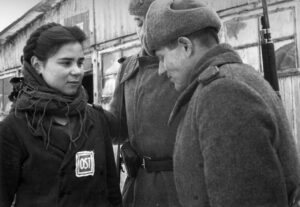 When the Germans surrendered at the end of World War II, Germany was divided into four areas of control by the Allied Powers…Great Britain in the northwest, France in the southwest, the United States in the south, and the Soviet Union in the east. Berlin, the capital city situated in Soviet territory, was also divided into four occupied zones. That gave those four countries governing control over their own sections of Germany, and the people in those areas. Not every country was exactly planning to do what the people might consider to be their best interests. The Allied countries had the control and the ability to dish out punishment as they saw fit. The Soviet Union considered the forced labor of Germans as part of German war reparations for the damage inflicted by Nazi Germany on the Soviet Union during the Axis-Soviet campaigns (1941-1945) of World War II. They wanted to exact some measure of revenge, I guess, and they were in a position to make that happen.
When the Germans surrendered at the end of World War II, Germany was divided into four areas of control by the Allied Powers…Great Britain in the northwest, France in the southwest, the United States in the south, and the Soviet Union in the east. Berlin, the capital city situated in Soviet territory, was also divided into four occupied zones. That gave those four countries governing control over their own sections of Germany, and the people in those areas. Not every country was exactly planning to do what the people might consider to be their best interests. The Allied countries had the control and the ability to dish out punishment as they saw fit. The Soviet Union considered the forced labor of Germans as part of German war reparations for the damage inflicted by Nazi Germany on the Soviet Union during the Axis-Soviet campaigns (1941-1945) of World War II. They wanted to exact some measure of revenge, I guess, and they were in a position to make that happen.
So, the Soviet authorities deported German civilians from Germany and Eastern Europe to the USSR after World 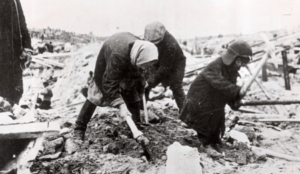 War II as forced laborers. It almost reminds me of what happened with the Holocaust, except that the Soviet Union had no interest in killing their captives. They wanted slave labor and a measure of retaliation. Ethnic Germans living in the USSR were conscripted for forced labor. German prisoners of war were also used as a source of forced labor during and after the war by the Soviet Union and by the Western Allies.
War II as forced laborers. It almost reminds me of what happened with the Holocaust, except that the Soviet Union had no interest in killing their captives. They wanted slave labor and a measure of retaliation. Ethnic Germans living in the USSR were conscripted for forced labor. German prisoners of war were also used as a source of forced labor during and after the war by the Soviet Union and by the Western Allies.
The decision was made and the fate of the German people was sealed. In 1946, the Soviet Union forcibly relocated more than 2,500 former Nazi German specialists, including scientists, engineers, and technicians who worked in specialist areas, from companies and institutions relevant to military and economic policy in the Soviet occupation zone of Germany (SBZ) and Berlin, along with around 4,000 family members, totaling more than 6,000 people, to the Soviet Union as war reparations. These specialists with all of their knowledge and abilities, could easily change the course of history in the Soviet Union, or any country they were placed in, for that matter. Still, not all of the forced labor were specialists. Many were unskilled labor, doing menial jobs.
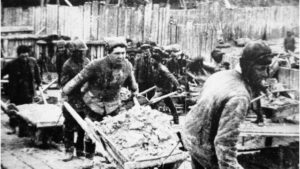
The good thing was that the situation in Germany after World War II was appalling. Many of the people were homeless from the bombings. I suppose that, for that reason, the forced move, while scary, was not the worst thing in the world. It was possible that a new life in the Soviet Union could be favorable when compared to war-torn Germany. It is unclear whether any Germans who were sent to the Soviet Union chose to go back to Germany, because information about forced labor of Germans in the Soviet Union was suppressed in the Eastern Bloc until after the dissolution of the Soviet Union in 1991. Many of those records could have also been destroyed.
 Bernhardt Otto Holtermann, who was born on April 29, 1838, was a prospector who owned part of an Australian claim where rich veins of gold were discovered after years of dry digging. I suppose it does take perseverance to successfully mine for gold, but when you consider that Holtermann finally discovered gold afteryears of digging, I would say that mining for gold also takes faith. Holtermann was born in Germany, and at adulthood set sail for Sydney, Australia in order to avoid military service. Most of his mining years were unsuccessful, including the year he even blew himself up with a premature explosion of blasting powder. Of course, his accidental explosion did not kill him, and must not have been very strong, because at the time of his greatest find, he still had all his limbs.
Bernhardt Otto Holtermann, who was born on April 29, 1838, was a prospector who owned part of an Australian claim where rich veins of gold were discovered after years of dry digging. I suppose it does take perseverance to successfully mine for gold, but when you consider that Holtermann finally discovered gold afteryears of digging, I would say that mining for gold also takes faith. Holtermann was born in Germany, and at adulthood set sail for Sydney, Australia in order to avoid military service. Most of his mining years were unsuccessful, including the year he even blew himself up with a premature explosion of blasting powder. Of course, his accidental explosion did not kill him, and must not have been very strong, because at the time of his greatest find, he still had all his limbs.
Holtermann’s “claim to fame” gold nugget was the largest gold specimen ever found, 59 inches long, weighing 630 pounds, and with an estimated gold content of 3,000 troy ounces. It was found at Hill End, near Bathurst, New South Wales. The nugget brought him enough wealth to build a mansion in North Sydney. Today, the mansion is one of the boarding houses at Sydney Church of England Grammar School (known as the Shore school). While working with one of his partners and later brother-in-law, Ludwig Hugo ‘Louis’ Beyers in their Star of Hope Gold Mining Company, in which he and Beyers were among the partners, they struck it rich. On February 22, 1868, Holtermann married Harriett Emmett, while Beyers married her sister Mary. On October 19, 1872, the Holtermann Nugget was discovered. While it was not “strictly speaking” a nugget, it was a gold specimen, a mass of gold embedded in rock, in this case quartz. Holtermann attempted to buy the 3,000-troy-ounce specimen from the company, offering £1000 over its estimated value of £12,000 (about AU$1.9 million in 2016 currency, AU$4.8 million on the 2017 gold price), 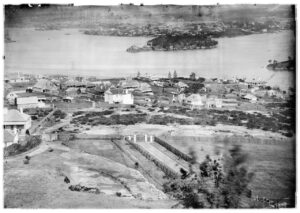 but was turned down, and the nugget was sent away to have the gold extracted. Holtermann was so upset about that, that resigned from the company in February 1873.
but was turned down, and the nugget was sent away to have the gold extracted. Holtermann was so upset about that, that resigned from the company in February 1873.
Holtermann did manage to get a photograph of himself with the nugget. This famous photo of Holtermann next to a giant “nugget” was taken by an unknown photographer. After leaving the Star of Hope Gold Mining Company, Holtermann was elected as a member for Saint Leonard’s parliament in 1882. Tragically, at the young age of just 47 years, Holtermann died in Sydney, Australia on his birthday, April 29, 1885, of “cancer of the stomach, cirrhosis of the liver, and dropsy.” He left behind his wife, three sons, and two daughters.
 In every army, navy, and air force, there are exceptional soldiers…even among the enemy. During World War II, the German Luftwaffe had an incredible pilot. His name was Erich Rudorffer, and he is credited with shooting down thirteen Soviet aircraft in a single mission on October 11, 1943. In that historic mission while flying an FW-190, Rudorffer downed eight Yak-7s and five Yak-9s of the Soviet Air Force. He eventually shot down 222 enemy aircraft and ended up his combat career flying the Messerschmitt ME-262, the first operational jet fighter.
In every army, navy, and air force, there are exceptional soldiers…even among the enemy. During World War II, the German Luftwaffe had an incredible pilot. His name was Erich Rudorffer, and he is credited with shooting down thirteen Soviet aircraft in a single mission on October 11, 1943. In that historic mission while flying an FW-190, Rudorffer downed eight Yak-7s and five Yak-9s of the Soviet Air Force. He eventually shot down 222 enemy aircraft and ended up his combat career flying the Messerschmitt ME-262, the first operational jet fighter.
Still, it wasn’t just the number of planes he shot down that made him remarkable. It was also the fact that he managed to survive the war despite flying over 1000 missions and being shot down an incredible 16 times. He was even forced to parachute from his stricken fighter planes 9 of those times. Not just a Soviet killer, Rudorffer also shot down 86 aircraft operated by Western Allied air forces. He became a commercial pilot after World War II.
Rudorffer was born on November 1, 1917, in Zwochau, which was a part of the Kingdom of Saxony of the German Empire at that time. Strangely, or maybe not, very little is said or known about his parents. That was typical of the German leadership of that era. They felt like the state, and not the parents should raise the children, because…well, parents had no training in such things. Not that the German leadership did either, but they decided that they knew more than the parents, so they pulled the children from their parents’ homes and put them in boarding schools to “train” them in the German ways. After his graduation from school, Rudorffer received a vocational education as an automobile metalsmith specialized in coachbuilding, which was likely another of the German or “Nazi” way of deciding the course of the lives of the children. He might have stayed a mechanic were it not for World War I. “Rudorffer joined the military service of the Luftwaffe with Flieger-Ersatz-Abteilung 61 (Flier Replacement Unit 61) in Oschatz on April 16, 1936. From September 2 to October 15, 1936, he served with Kampfgeschwader 253 (KG 253—253rd Bomber Wing) and from October16, 1936 to February 24, 1937, he was trained as an aircraft engine mechanic at the Technische Schule Adlershof, the technical school at Adlershof in Berlin. On March 14, 1937, Rudorffer was posted to Kampfgeschwader 153 (KG 153—153rd Bomber Wing), where he served as a mechanic until end October 1938. After that, he was transferred to Flieger-Ersatz-Abteilung 51 (Flier Replacement Unit 51) based at Liegnitz in Silesia, present-day Legnica in Poland, for flight training. Rudorffer was first trained as a bomber pilot and then as a Zerstörer, a heavy fighter or destroyer, pilot. In the winter of 1944 Rudorffer was trained on the ME 262 jet fighter. In February 1945, he was recalled to command I. Gruppe JG 7 “Nowotny” from Major Theodor Weissenberger who replaced Steinhoff as Geschwaderkommodore. Rudorffer claimed 12 victories with the ME 262, to bring his total to 222. His tally 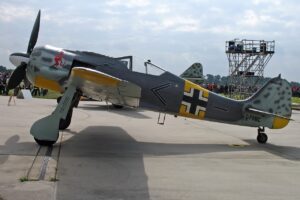 included 136 on the Eastern Front, 26 in North Africa, and 60 on the Western Front including 10 heavy bombers.”
included 136 on the Eastern Front, 26 in North Africa, and 60 on the Western Front including 10 heavy bombers.”
After the war ended, Rudorffer started out flying DC-2s and DC-3s in Australia. Later, he worked for Pan Am and the Luftfahrt-Bundesamt, Germany’s civil aviation authority. Rudorffer was honored as one of the characters in the 2007 Finnish war movie “Tali-Ihantala 1944.” A FW 190 participated, painted in the same markings as Rudorffer’s aircraft in 1944. The aircraft, now based at Omaka Aerodrome in New Zealand, still wears the colors of Rudorffer’s machine. Rudorffer died in April 2016 at the age of 98. At the time of his death, he was the last living recipient of the Knight’s Cross of the Iron Cross with Oak Leaves and Swords.
 I love watching the pigeons that fly around at one end of the walking path I use regularly. They are wild of course, but maybe at one time they were owned…or maybe their parents were. Now, they are free to soar around in beautiful formations, as they enjoy the freedom of being carefree and, well just being birds. Not all pigeons are free, however, and some even perform a very important service…some to their country. Pigeons have actually been used in wars to carry messages to different battalions, sadly because they were expendable, where the men were not.
I love watching the pigeons that fly around at one end of the walking path I use regularly. They are wild of course, but maybe at one time they were owned…or maybe their parents were. Now, they are free to soar around in beautiful formations, as they enjoy the freedom of being carefree and, well just being birds. Not all pigeons are free, however, and some even perform a very important service…some to their country. Pigeons have actually been used in wars to carry messages to different battalions, sadly because they were expendable, where the men were not.
One famous pigeon known as “President Wilson,” was hatched in France. “President Wilson” (this special pigeon) assisted both the American tank corps and US infantry men in their fight against Germany. It was in the Meuse-Argonne Offensive, that “President Wilson” made his most famous flight. He was assisting the 78th Infantry near Grandpre. The battle had been a vicious one, and while engaging the enemy on the morning of October 5, 1918, President Wilson’s unit released him to request artillery support. No flight through a battleground was easy, but this one was especially dangerous. A bird can’t really fly without being seen, and the Germans knew to watch for pigeons. The German soldiers opened fire on him, peppering him with bullets. “President Wilson” sustained numerous injuries, nevertheless, he was able to make his flight back to headquarters in record setting time…under 25 minutes. “President Wilson” survived his wounds, after which he was retired and sent to the US Army Signal Corps Breeding and Training Center at Fort Monmouth, New Jersey, where he would live another eleven years. After his death, Wilson was taxidermized and presented to the Smithsonian Institution. He was transferred to the custody of the US Army in 2008. “President Wilson” is now located in the prestigious halls of the US military’s headquarters in Arlington, Virginia. He serves as a reminder that these simple birds…often considered a nuisance by the general public…were once war heroes.
Another famous pigeon was known as Cher Ami, who also gained fame during World War I. Cher Ami’s moment of heroism came during the actions of the so-called “Lost Battalion.” With the 77th Division finding themselves 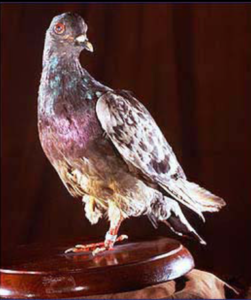 surrounded by the German army, besieging them for five days, Cher Ami was the third pigeon sent out to tell division headquarters that the men were surrounded and were taking fire, both enemy and friendly!! Cher Ami was hit almost as quickly as he rose. He was shot down but managed to take flight again. He arrived back at his loft at division headquarters 25 miles to the rear in just 25 minutes, helping to save the lives of the 194 survivors. He had been shot through the breast, blinded in one eye, and had a leg hanging only by a tendon. Cher Ami was the last pigeon available. Had he not made it, the men would have been on their own. Cher Ami was stuffed and mounted after his death and is now in the Smithsonian Museum of American History.
surrounded by the German army, besieging them for five days, Cher Ami was the third pigeon sent out to tell division headquarters that the men were surrounded and were taking fire, both enemy and friendly!! Cher Ami was hit almost as quickly as he rose. He was shot down but managed to take flight again. He arrived back at his loft at division headquarters 25 miles to the rear in just 25 minutes, helping to save the lives of the 194 survivors. He had been shot through the breast, blinded in one eye, and had a leg hanging only by a tendon. Cher Ami was the last pigeon available. Had he not made it, the men would have been on their own. Cher Ami was stuffed and mounted after his death and is now in the Smithsonian Museum of American History.
Looking back on World War I, and the many lives lost, we also need to remember that without war heroes like “President Wilson” and Cher Ami the losses would have been far greater. Many pigeons lost their lives in these efforts, but they were heroes for the sacrifices they made. I’m sure the soldiers knew that well.
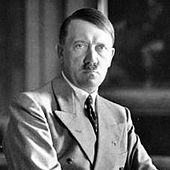
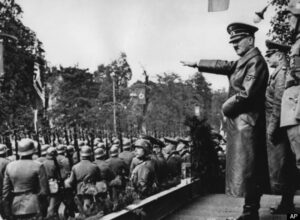 There are certain situations when I think citizenship is a must have element, and some that I think “natural-born” citizenship is absolutely essential. On September 15, 1935, German Jews were stripped of their citizenship, reducing them to mere “subjects” of the state. This heinous crime was carried out by the “president and chancellor of Germany,” Adolf Hitler. I use the quotation marks, because Hitler should never have been allowed to be in that office. Adolf Hitler became a citizen of Germany on February 25, 1932. Hitler, who was born in Austria, had immigrated to Germany in 1913, and renounced his Austrian citizenship in 1925. Hitler was a stateless nomad from 1925 to 1931, when he decided on the political ambition of becoming president and chancellor. That was when he decided to become a citizen, in fact that was the only reason he became a citizen. Hitler had a plan to take over and completely transform Germany, and his “transformation” was to be the worst thing for Germany. I think that is why a president needs to be a “natural-born” citizen. A president needs to have a connection to his country…a connection he is born into. Then and only then does he have the ability to care about the country…not that all presidents do, but they have that ability, because they belong. I’m sure some would disagree with me, but it will not change my mind.
There are certain situations when I think citizenship is a must have element, and some that I think “natural-born” citizenship is absolutely essential. On September 15, 1935, German Jews were stripped of their citizenship, reducing them to mere “subjects” of the state. This heinous crime was carried out by the “president and chancellor of Germany,” Adolf Hitler. I use the quotation marks, because Hitler should never have been allowed to be in that office. Adolf Hitler became a citizen of Germany on February 25, 1932. Hitler, who was born in Austria, had immigrated to Germany in 1913, and renounced his Austrian citizenship in 1925. Hitler was a stateless nomad from 1925 to 1931, when he decided on the political ambition of becoming president and chancellor. That was when he decided to become a citizen, in fact that was the only reason he became a citizen. Hitler had a plan to take over and completely transform Germany, and his “transformation” was to be the worst thing for Germany. I think that is why a president needs to be a “natural-born” citizen. A president needs to have a connection to his country…a connection he is born into. Then and only then does he have the ability to care about the country…not that all presidents do, but they have that ability, because they belong. I’m sure some would disagree with me, but it will not change my mind.
His citizenship actually came about when a fellow member of the Nazi Party appointed Hitler to a low-level government job that came with automatic citizenship. Once he was a citizen, Hitler’s new status allowed him to achieve his political goals. As a citizen, he could run for office. Hitler made sure that he was well liked, and by the middle of 1934, he was in complete control of Germany as Führer und Reichskanzler (leader and chancellor). He didn’t wait long to begin, and soon redefined citizenship to serve his beliefs. He was a hate-filled man, and he used race and pan-German heritage to give citizenship to, and take it from, large groups of people. Citizenship now depended on how Hitler felt about the people. Many would say that he was a white supremacist, but the reality was that there were many races of people he didn’t like, and many of them were white, so it wasn’t about color. As World War II began, Hitler’s views on German supremacy were fueling a military campaign that destroyed borders and entire populations all across Europe. People who were born in Germany and had been citizens all their lives were being systematically stripped of their citizenship, their rights, and their lives, just because they were Jews, blacks, gypsies, and some other races. Hitler’s goal was to rid the world of anyone who was not “pure-blooded” German stock. Never mind the fact that he was not!!
Practically from the minute he took office, Hitler began issuing what we would call “Executive Orders” that barely disrupted the lives of those “pure-blooded” German stock, other than to basically elevate them to the level of “masters” over anyone who did not qualify as “pure-blooded” German stock. His dream of a “pure-blooded” society soon became a nightmare for many. Many of the German “pure-blooded” German citizen didn’t agree with what he was doing, and some didn’t really understand what he was doing, exactly, but some of them saw it as an opportunity to take from the “unqualified” citizens, anything they wanted. They became brutal in their treatment of the “unqualified” citizens, especially the Jews.
Hitler began his persecution of the Jews within the first year of office. German Jews were excluded from many high-profile vocations, such as public office, journalism, radio, theater, film, and teaching, and even farming. The professions of law and medicine were also withdrawn slowly as opportunities. “Jews Not Welcome” signs were posted on shop and hotel windows, beer gardens, and other public areas. Known as the Nuremberg Laws, these discriminatory acts became a deep-seated part of the German culture, which in turn, making them even more far-reaching. Jews were forbidden to marry “Aryans” or engage in extramarital relations with them. Jews could not employ female Aryan servants if they were less than 35 years of age. Hunger soon became a part of Jewish life, because it became difficult even to buy food, as groceries, bakeries, and dairies would not admit Jewish customers. Even pharmacies refused to sell them medicines or drugs. Their lives soon began to simply spiral towards despair and eventual death.
At first, the outside world didn’t understand what they were seeing. Unemployment had dropped exponentially under Hitler’s early commandeering of the economy. Things actually looked better to the world. A very few, some foreign visitors, even some political opponents within Germany itself, saw these racist laws and practices for what they were, but most were beguiled into thinking it was merely a phase. They assumed that the “birth 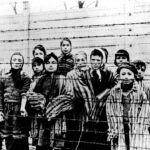
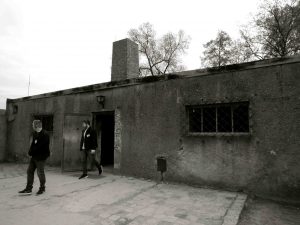 pains” of Hitler’s developing plans would eventually smooth out and the bad parts would fade away, as he began to focus more on the economy and less on race, but they were wrong, because Hitler was a very determined, and very focused dictator…and he was insane, as the world and the German people would soon find out. It is my opinion that even a seemingly good citizen, who is not “natural-born” is not a good candidate for president, because their ideas and plans for a nation they have no real stake in, will be very unlikely to produce good for the nation in the end.
pains” of Hitler’s developing plans would eventually smooth out and the bad parts would fade away, as he began to focus more on the economy and less on race, but they were wrong, because Hitler was a very determined, and very focused dictator…and he was insane, as the world and the German people would soon find out. It is my opinion that even a seemingly good citizen, who is not “natural-born” is not a good candidate for president, because their ideas and plans for a nation they have no real stake in, will be very unlikely to produce good for the nation in the end.
 As we all know, Adolph Hitler was a liar and a murderer. He really never made a move that wasn’t calculated and devious. On September 1, 1939, German forces under the control of Adolf Hitler bombarded Poland on land and from the air. The invasion was more than just a taking of territory. Hitler knew that he might need that area later, and so he did. Hitler had been murdering people that didn’t fit into his mold of “life that had value” and that included Jews, the mentally or physically handicapped, and later gypsies and other ethnicities. Basically, he wanted to eliminate anyone that wasn’t Aryan. Aryan is a word relating to a hypothetical ethnic type illustrated by or descended from early speakers of Indo-European languages. To Hitler it meant white, with blond hair and blue eyes. Oddly, while Hitler had blue eyes, his hair was brown. Somehow that “problem” with his definition of Aryan didn’t concern Hitler. I guess he was happy to be a “special Aryan.” In reality, there are different kinds of Aryans. They can be found with blond, red, brown, white, or black hair, so that wasn’t really an issue either. Hitler considered himself Aryan because he was a native German-speaker, and he knew the definition of “Aryan” as it was used in those days. I don’t think it was ever about Aryan, per se, but rather about getting rid of any group that he decided that he didn’t like.
As we all know, Adolph Hitler was a liar and a murderer. He really never made a move that wasn’t calculated and devious. On September 1, 1939, German forces under the control of Adolf Hitler bombarded Poland on land and from the air. The invasion was more than just a taking of territory. Hitler knew that he might need that area later, and so he did. Hitler had been murdering people that didn’t fit into his mold of “life that had value” and that included Jews, the mentally or physically handicapped, and later gypsies and other ethnicities. Basically, he wanted to eliminate anyone that wasn’t Aryan. Aryan is a word relating to a hypothetical ethnic type illustrated by or descended from early speakers of Indo-European languages. To Hitler it meant white, with blond hair and blue eyes. Oddly, while Hitler had blue eyes, his hair was brown. Somehow that “problem” with his definition of Aryan didn’t concern Hitler. I guess he was happy to be a “special Aryan.” In reality, there are different kinds of Aryans. They can be found with blond, red, brown, white, or black hair, so that wasn’t really an issue either. Hitler considered himself Aryan because he was a native German-speaker, and he knew the definition of “Aryan” as it was used in those days. I don’t think it was ever about Aryan, per se, but rather about getting rid of any group that he decided that he didn’t like.
Hitler’s main purpose for the invasion of Poland was to regain lost territory and ultimately rule their eastern neighbor. Mostly, however, Hitler wanted the world to know exactly how he planned to wage war. This would become the “blitzkrieg” strategy. The Blitzkrieg was a term used to describe “a method of offensive warfare designed to strike a swift, focused blow at an enemy using mobile, maneuverable forces, including armored  tanks and air support. Such an attack ideally leads to a quick victory, limiting the loss of soldiers and artillery. After the German forces had plowed their way through, devastating a swath of territory, infantry moved in, picking off any remaining resistance.”
tanks and air support. Such an attack ideally leads to a quick victory, limiting the loss of soldiers and artillery. After the German forces had plowed their way through, devastating a swath of territory, infantry moved in, picking off any remaining resistance.”
Hitler was methodical. He established a base of operations within the target country. Then, he immediately began setting up “security” forces to take out anyone who disagreed with his Nazi ideology, whether racial, religious, or political. He set up concentration camps for slave laborers and the extermination of uncooperative civilians. It didn’t take long for the target nation, in this case Poland to become a conquered nation under German rule. Just one day after the German invasion of Poland, Hitler was busy setting up SS “Death’s Head” regiments to terrorize the people. He was preparing for his planned terror.
The Polish army tried to fight back, but they made several severe strategic miscalculations in those early days. Even with an army of 1 million soldiers, the lack of the necessary equipment was a severe detriment to the Polish forces as they attempted to take the Germans head-on, when maybe they should have fallen back to defensive positions. I think the natural way to face an enemy, is head-on. We try to “show no fear” when attacked, but in the end, this thinking, while admirable was probably behind the times, at least in battle, and the brave Polish soldiers were no match for the overwhelming and modern-mechanized German forces. To make matters worse, any hope the Polish soldiers might have had of a Soviet counter-response was lost with  the signing of the Ribbentrop-Molotov Nonaggression Pact…”a non-aggression pact between Nazi Germany and the Soviet Union that partitioned Eastern Europe between them. The pact was signed in Moscow on 23 August 1939 by German Foreign Minister Joachim von Ribbentrop and Soviet Foreign Minister Vyacheslav Molotov and was officially known as the Treaty of Non-Aggression between Germany and the Union of Soviet Socialist Republics. Unofficially, it has also been referred to as the Hitler–Stalin Pact, Nazi–Soviet Pact or Nazi–Soviet Alliance.” Germany invaded Poland on September 1, 1939. Great Britain responded with bombing raids over Germany three days later.
the signing of the Ribbentrop-Molotov Nonaggression Pact…”a non-aggression pact between Nazi Germany and the Soviet Union that partitioned Eastern Europe between them. The pact was signed in Moscow on 23 August 1939 by German Foreign Minister Joachim von Ribbentrop and Soviet Foreign Minister Vyacheslav Molotov and was officially known as the Treaty of Non-Aggression between Germany and the Union of Soviet Socialist Republics. Unofficially, it has also been referred to as the Hitler–Stalin Pact, Nazi–Soviet Pact or Nazi–Soviet Alliance.” Germany invaded Poland on September 1, 1939. Great Britain responded with bombing raids over Germany three days later.
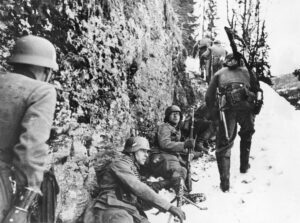 During the largely unsuccessful Norwegian Campaign of World War II, the Allies were in a fight to stop the Germans from fully occupying Norway, but it didn’t work in the end. The Norwegian campaign was carried out from April 8, 1940 to June 10, 1940, and involved the attempt by Allied forces to defend northern Norway coupled with the resistance of the Norwegian military to the country’s invasion by Nazi Germany.
During the largely unsuccessful Norwegian Campaign of World War II, the Allies were in a fight to stop the Germans from fully occupying Norway, but it didn’t work in the end. The Norwegian campaign was carried out from April 8, 1940 to June 10, 1940, and involved the attempt by Allied forces to defend northern Norway coupled with the resistance of the Norwegian military to the country’s invasion by Nazi Germany.
The Norwegian Campaign was planned as Operation Wilfred and Plan R 4, prior to the actual German attack, which the Allies knew was imminent, but had not yet happened. On April 4th, the battlecruiser HMS Renown set out from Scapa Flow for the Vestfjorden with twelve destroyers. The Royal Navy and the  Kriegsmarine met at the First Battle of Narvik on April 9 – 10. The British forces conducted the Åndalsnes landings on April 13, thereby putting everything in place for the actual operation. Germany’s strategic reason for wanting Norway was to seize the port of Narvik and guarantee the delivery of iron ore needed for German steel production. In any war, steel is necessary for much of the weaponry.
Kriegsmarine met at the First Battle of Narvik on April 9 – 10. The British forces conducted the Åndalsnes landings on April 13, thereby putting everything in place for the actual operation. Germany’s strategic reason for wanting Norway was to seize the port of Narvik and guarantee the delivery of iron ore needed for German steel production. In any war, steel is necessary for much of the weaponry.
During one part of that campaign, in an air fight over Norway, a British fighter took down a German plane over a densely wooded area. Unfortunately, the British aircraft crashed as well. As it turns out, both crews survived the crashes, and while trying to get to a safe place, they encountered each other in the wilderness. In most situations, this could have been bad for one or both of the crews, but even though they were struggling against a language barrier, the rival airmen agreed not to turn on each other and instead, to team up in order to find  safety. They stayed in an abandoned hotel and shared breakfast. It wasn’t peace exactly, but they formed an uneasy truce, while they waited to see which side would show up to help first.
safety. They stayed in an abandoned hotel and shared breakfast. It wasn’t peace exactly, but they formed an uneasy truce, while they waited to see which side would show up to help first.
Instead of the British or the Germans, it was a Norwegian ski patrol that showed up to rescue the British soldiers, and of course, to take the Germans as POWs. While that one battle seemed to indicate that the British were headed for a victory over the Germans, that was not to be the case. The Germans did finally take over Norway in its entirety. Of course, as we all know, one battle is not a very good indication of who will win the war, and in the end, it was Germany that took a great fall, losing the entirety of World War II.

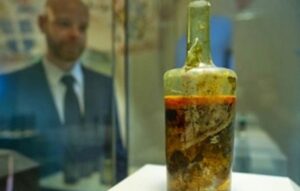 Most people know that wine gets better with age, but I wonder if there is a limit to that statement. Some wines, I’m told wine can be aged for 10 to 20 years, but there really is a limit. In a Roman tomb in Germany in 1867, a bottle of wine was found that is believed to date back to 325 – 350 CE. The oldest bottle of wine ever found. Those who found it, named it Speyer, for the city of Speyer, near where the bottle was found. The bottle was discovered during an excavation of a 4th-century AD Roman nobleman’s tomb. The tomb contained two sarcophagi, one holding the body of a man and one a woman. It was a very unique bottle, with dolphin-shaped handles, and it is sealed with wax and olive oil. I’m sure that was the hope that by so preserving the wine, that it would be able to be used later, but then it was found in a tomb, so I’m not sure of the actual purpose. There were several other bottles found with the Speyer bottle, but they were all empty or broken.
Most people know that wine gets better with age, but I wonder if there is a limit to that statement. Some wines, I’m told wine can be aged for 10 to 20 years, but there really is a limit. In a Roman tomb in Germany in 1867, a bottle of wine was found that is believed to date back to 325 – 350 CE. The oldest bottle of wine ever found. Those who found it, named it Speyer, for the city of Speyer, near where the bottle was found. The bottle was discovered during an excavation of a 4th-century AD Roman nobleman’s tomb. The tomb contained two sarcophagi, one holding the body of a man and one a woman. It was a very unique bottle, with dolphin-shaped handles, and it is sealed with wax and olive oil. I’m sure that was the hope that by so preserving the wine, that it would be able to be used later, but then it was found in a tomb, so I’m not sure of the actual purpose. There were several other bottles found with the Speyer bottle, but they were all empty or broken.
Of course, given the age of the bottles, no one will ever drink the contents. It would not be safe, so the exact contents remain unknown. Nevertheless, archaeologists believe the liquid inside was made from grapes planted in the region. The Speyer wine bottle (Römerwein in German) is a sealed bottle that is will not been opened to check the contents. Even without verification, it is considered the world’s oldest known bottle of wine. Since the discovery of the bottle, it has been exhibited at the Wine Museum section of the Historical Museum of the Palatinate in Speyer. The “Römerwein” is housed in the museum’s Tower Room. It is a 51 US fluid ounce glass bottle with amphora-like “shoulders” that are yellow green in color and with dolphin-shaped handles.
It is thought that the man in the tomb was a Roman legionary, and the wine was a provision for his journey to  Heaven. People had some strange customs back then, and some may still have. Of the six glass bottles in the woman’s sarcophagus and the ten vessels in the man’s sarcophagus, only one still contained a liquid. There is a clear liquid in the bottom third, and a mixture similar to rosin above. While it has reportedly lost its ethanol content, analysis is consistent with at least part of the liquid having been wine, although I’m not sure how they made that analysis without opening the bottle. The wine was infused with a mixture of herbs, but the preservation of the wine is attributed to the large amount of thick olive oil. Since I’m not a scientist, I’m not sure how that would work, but apparently it did, as it was added to the bottle to seal the wine off from air, along with a hot wax seal. The use of glass in the bottle is unusual, however, as typically Roman glass was too fragile to be dependable over time.
Heaven. People had some strange customs back then, and some may still have. Of the six glass bottles in the woman’s sarcophagus and the ten vessels in the man’s sarcophagus, only one still contained a liquid. There is a clear liquid in the bottom third, and a mixture similar to rosin above. While it has reportedly lost its ethanol content, analysis is consistent with at least part of the liquid having been wine, although I’m not sure how they made that analysis without opening the bottle. The wine was infused with a mixture of herbs, but the preservation of the wine is attributed to the large amount of thick olive oil. Since I’m not a scientist, I’m not sure how that would work, but apparently it did, as it was added to the bottle to seal the wine off from air, along with a hot wax seal. The use of glass in the bottle is unusual, however, as typically Roman glass was too fragile to be dependable over time.
Scientists have considered opening the bottle to further analyze the contents, but as of 2023 the bottle has remained unopened, mostly because of concerns about how the liquid would react when exposed to air. The museum’s curator, Ludger Tekampe has stated he has seen no changes in the bottle in over 25 years, so whatever they are doing to preserve it is working. It seems to me that scientists would be remiss in their care of this bottle by opening it for no good reason. I think it should be left as is.

